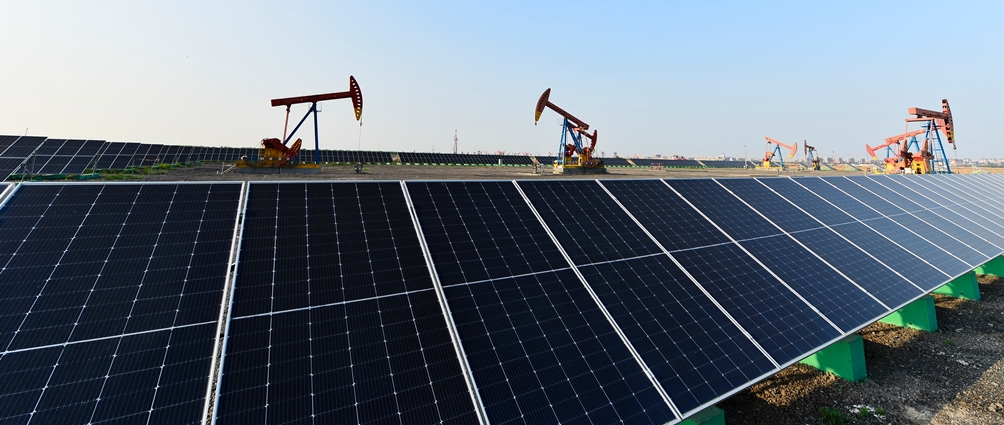As we approach the end of President Trump’s first 100 days back in office, the energy landscape is experiencing seismic shifts. For energy professionals, investors, and stakeholders across the sector, this period has brought both challenges and opportunities that demand careful navigation.
Swift and Decisive Action
The administration hit the ground running with what one official described as “organized chaos. “Unlike the transition challenges of his first term, Trump 2.0 arrived with a well-prepared playbook for the energy sector. As noted by Marc Lotter, former Special Assistant to President Trump, “The thing that is most striking to me is how much more prepared they were for Trump 2.0 than we were on Trump 1.0.” This preparation has enabled rapid implementation through executive orders and strategic appointments.
The president has signed an unprecedented 139 executive orders in just 100 days – nearly approaching what President Biden did over four years. Many of these directly impact energy markets, with the most consequential being the “Unleashing American Energy” order and the establishment of the National Energy Dominance Council.
The Freeze and Thaw Cycle
For many energy companies, particularly those dependent on federal grants or permits, the last three months have brought significant strain. Projects across renewables, transmission, and even traditional energy have faced delays as the administration implemented widespread funding freezes and regulatory reviews.
These freezes have stretched companies far beyond what their 2025 financial projections anticipated. Many clients tell me they’ve had to explain to their boards why $200+ million investments are suddenly in limbo – not due to market conditions, but because regulatory assumptions changed overnight.
Shifting Regulatory Landscape
On April 8, the president issued an executive order titled “Protecting American Energy From State Overreach,” which directs the Attorney General to identify state and local laws that burden “the identification, development, siting, production, or use of domestic energy resources” with special focus on climate change policies. This signals a fundamental shift in federal-state energy policy dynamics.
The administration has also targeted the “social cost of carbon” calculation, calling for its potential elimination from federal permitting decisions, which would dramatically reshape project economics across the energy spectrum.
Market Response
Energy markets have responded with volatility. While some traditional energy companies have seen valuation increases, many integrated players with renewable portfolios face uncertainty. Thermal power M&A activity has surged as utilities scramble to address capacity concerns amid unprecedented growth projections for electricity demand.
The numbers are staggering: we’re looking at potential 16% power demand growth over the next five years compared to the historical 1% annual increases. This demand surge, largely driven by AI and data centers, has created both challenges and opportunities across the sector.
Tariff Whiplash
Perhaps the most unsettling aspect of these first 100 days has been the familiar whiplash of tariff uncertainty. The administration’s rapid implementation of reciprocal tariffs has sent shockwaves through supply chains and capital planning, with the energy sector particularly vulnerable to these disruptions.
For those of us who lived through the Section 201 solar tariffs during Trump’s first term, this feels like déjà vu. I’ve spent hours with solar executives who are experiencing PTSD flashbacks to 2018, when overnight policy changes upended business models, froze project pipelines, and forced painful layoffs. Today’s tariff escalations threaten similar disruptions, but now across a broader spectrum of energy technologies.
Just as we saw with the first 201 tariffs, companies are scrambling to redraw supply chains, renegotiate contracts, and develop contingency plans for multiple tariff scenarios. The difference this time? The disruption extends far beyond solar, affecting everything from LNG export facilities to critical mineral supply chains for batteries and emerging clean tech.
The impact is particularly acute where tariffs intersect with IRA tax incentive structures. On a recent flight back from Nashville, I spoke with several rural electric cooperative executives who had been meeting with representatives in Washington. Their concerns were palpable. These co-ops had finally planned substantial battery storage projects leveraging the Direct Pay provisions in the IRA – a game-changer for tax-exempt entities that couldn’t previously monetize tax credits. Now, they’re watching equipment costs balloon 10-25% due to tariffs on critical components, threatening project economics that were already operating on thin margins.
What struck me most was their frustration at the timing. After decades of being unable to participate meaningfully in the clean energy transition due to their tax status, these co-ops had just gotten board approval for ambitious storage projects. For many rural communities, these projects represented both reliability improvements and economic development. Now they’re caught between rising costs and commitments to their member-owners, with few options to absorb the financial impact.
Looking Forward
For clean energy specifically, the reconciliation process for tax policy changes is anticipated around August-September, creating a critical timeline for stakeholders to influence outcomes. Many industry insiders expect implementation changes to clean energy incentives will be more nuanced than wholesale reversals.
The resilience of the American energy sector remains its greatest strength. I’ve seen this industry rebound from price crashes (remember oil at -$37 during the pandemic?), weather catastrophic storms, and adapt to radical policy shifts. The professionals who keep our systems running aren’t ideologues – they’re pragmatic problem-solvers who recognize that uncertainty often breeds the greatest opportunities.
For investors and companies navigating this new landscape, regulatory intelligence isn’t academic – it’s existential. Understanding not just current rules but how frameworks are evolving has become a fundamental prerequisite for sound business decisions.
As we move into the next phase of this administration, one thing is clear: the energy transition isn’t following a linear political narrative. It’s being shaped by market forces, technological change, and consumer demand as much as by policy. Those who can see beyond the political noise to the underlying business fundamentals will find significant opportunities amid the transformation.
The author has been covering energy policy for 22 years and has spent the first 100 days of the Trump Administration meeting with energy executives, policymakers, and investors to analyze the impacts of the administration’s energy agenda.

